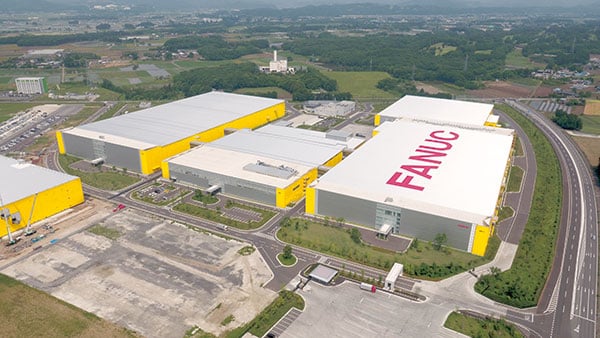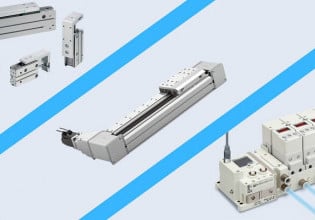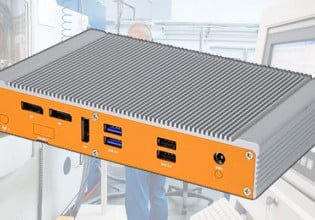Dark Manufacturing and Its Relationship With IIoT
Dark manufacturing, also referred to as lights-out manufacturing, is a manufacturing philosophy without human intervention in the complete manufacturing process.
What is Dark Manufacturing?
With advances in industrial automation, the complete manufacturing process can be automated. Delivering raw materials, manufacturing, quality assurance, and delivery of finished goods can be accomplished by robots. This eliminates the need for human workers in the production process. This methodology employed to conduct an end-to-end manufacturing process is dark manufacturing.

Figure 1. An example of a dark factory. Image used courtesy of JS Online
The term “dark manufacturing” is not always taken in the literal sense. The dark factory can choose to or not to have any light fixtures. The idea is that humans need light to conduct work. In a completely automated manufacturing process, the robots can continue working without lights. The complete process would be pre-programmed, and the factory can potentially be kept dark. This concept is alluded to in the names dark factory, dark manufacturing, and lights-out manufacturing.
Industrial automation robots, software algorithms, vision/spatial sensing technologies, low latency communication networks, artificial intelligence (AI), and IoT/IIoT infrastructure can implement dark factories. The specific technologies used will depend on factory design, produced goods, and required capital.
Dark Manufacturing Advantages
Dark manufacturing brings complete automation to the manufacturing processes. The advantages of dark manufacturing are similar to the advantages of automation at a large scale.
- Eliminate errors: On a factory floor, a significant portion of mistakes happen due to human errors. Dark manufacturing needs no human intervention and eliminates errors.
- Occupational Safety and Health Administration (OSHA): Dark manufacturing is completely OSHA compliant. There are very few safety hazards in a well-designed dark factory.
- Efficiency: The complete manufacturing process is automated with pre-determined programs driving the manufacturing process. This improves the efficiency of operations as there is no variability or operational delays.
- 24/7 operations: Robots do not need to take breaks during operations. They can churn out goods 24 hours of the day, so there is no need to design shifts. Dark manufacturing enables a 24-hour production process that continues 365 days a year.
- Energy consumption: Dark manufacturing improves the efficiency of operations, requiring less energy to produce the same output. Using lights on the factory floor is optional and can be eliminated. The same is the case for air conditioning and heating, depending upon the goods. Cumulatively, this leads to less power consumption and reduced costs.

Figure 2. FANUC’s Japan headquarters is reportedly a fully automated dark factory where the company produces its robots─with its robots! Image used courtesy of FANUC
Dark Manufacturing Disadvantages
Dark manufacturing not only comes with benefits for organizations. It also has its fair share of drawbacks.
- High capital: Setting up a dark factory requires specialized robots, software, and technicians. These do not come cheap. A company has to put out a large sum as capital expenditure to set up a dark factory. It will be many multiple times higher than setting up a regular automated factory.
- Maintenance: Though the regular operations of dark factories will be without human interference, humans usually perform maintenance. Another disadvantage is that machine wear and tear that employees would have caught in normal circumstances would be less known in dark factories and could potentially cause catastrophe in the future. Predictive maintenance would be beneficial here.
- Flexibility: The processes in a dark factory are completely automated. Well-defined steps have to be programmed to achieve this level of automation. The process cannot be changed quickly. It requires additional capital expenditure and downtime to change the production process.
- Job displacement: As human involvement is not necessary for a dark factory, there will be jobs lost, which can cause some concerns. There will be at least a temporary pain due to displaced jobs.
Dark Manufacturing Applications
Many factories across the world have adopted industrial automation. Still, there is a need for human presence on many factory floors. Due to the very high capital expenditure required, adopting dark manufacturing is not at the same pace across industries. Some industries, like semiconductor fabrication, require a pristine environment for fab processes. Many parts of the process are completely automated to prevent human intervention and, thus, avoid contaminants.

Figure 3. Robots welding in a dark factory.
While industries like automotive manufacturing, companies like Tesla allegedly failed to build a successful dark manufacturing factory. Though many automated robots are used in the automotive industry, it is difficult to completely automate.
Industries like logistics and supply chains have very little automation in place. But those industries suffer from a shortage of available labor, especially after the boom in e-commerce. More automation and eventually dark warehouse solutions could make such businesses feasible. Some of the industries that already employ dark manufacturing or could benefit from dark manufacturing are:
- Semiconductor
- Pharmaceutical/vaccine manufacturing
- Chemicals
- Nuclear waste handling
- Electronics assembly
- Mining
This is not an exhaustive list. Many more industries could benefit from employing dark manufacturing.
IoT/IIoT in Dark Manufacturing
The robots and processes in a dark factory are completely automated and pre-programmed. Yet, the process should be monitored. Since human intervention in the shop floor is less than ideal, there needs to be a way to relay the data from the factory floor to a central console for remote monitoring. IIoT is critical in making it happen.
IIoT devices are essential in creating a dark manufacturing process. There are multiple moving parts and innumerable variables involved in a dark manufacturing process. These data points are captured by IIoT devices and sent to the central hub for monitoring. Even AI algorithms can check if the dark manufacturing process is successful according to the design.
Dark manufacturing, like any other new technological process, has its advantages and disadvantages. It suits certain industries, like semiconductors, over others, like automotive. However, as the technology continues to grow, it may be a process all industries can eventually operate.






